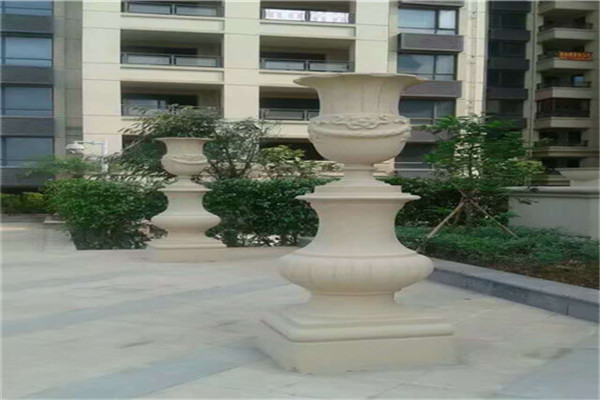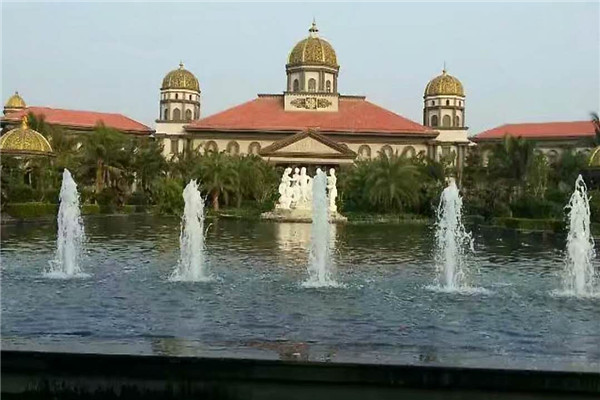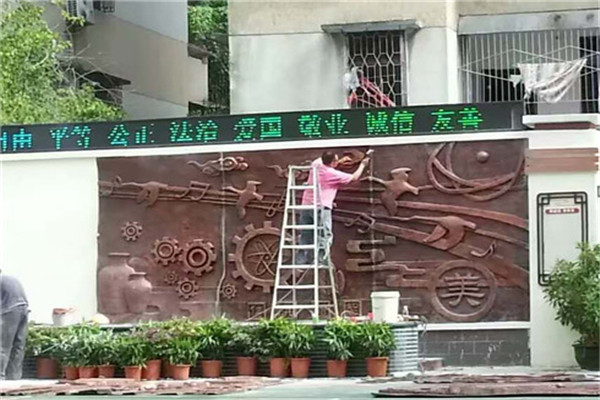
From the perspective of development, sculpture can be divided into traditional sculpture and modern sculpture. Traditional sculpture is a visual, tactile and static three-dimensional art form molded with traditional materials; Modern sculpture uses new materials to make anti traditional four-dimensional, five-dimensional, acousto-optic, soft and dynamic sculptures. According to traditional materials, and according to environment and function, it can be divided into urban sculpture, garden sculpture, indoor sculpture, outdoor sculpture, desk sculpture, shelf sculpture, etc. There are many kinds of sculpture materials, such as clay, stone, wood, metal, gypsum, resin, ivory, etc. Then several categories were developed: wood carvings: wood carvings have a long history. Most of the early themes were centered on religion. In addition to religious icons, they were also used for the decoration of altars and religious places. In countries where wood building flourishes, wood carving develops with architecture. Modern wood carvings have quite diversified styles and features, and artists like to use abstract forms to express them. In addition, wood carving is also an important contributor to the invention of printing. Please see woodcut prints for details; Stone carving: The regions where stone carving is developed have a lot to do with where the stones suitable for carving are produced. The regions where stone carving is developed have a long history of stone carving. In the past, stone carvings were often used as decorations of gardens, signs of doorways, or architectural decorations of mausoleums. Because the stone is thick (not easy to be stolen), and the details of carvings are not easy to be damaged by wind and rain, stone carvings are mostly in outdoor environments. The common stone carving material is marble. There are clay sculptures, ice sculptures, sand sculptures, metal sculptures and pottery.

Microcarvings pay special attention to the selection of materials. The stone material should be absolutely pure, and there should be no sand grid or half silk cracks, because half a sand dot may damage a fine picture or more than 10 Chinese characters. Secondly, the micro carving knife is also a special thin knife, which should be sharp and sharp. It is necessary to have a particularly proficient knowledge of calligraphy and traditional Chinese painting. When carving, "meaning carving" and "meaning carving" can be carried out. Hold your breath and concentrate on your thoughts on the spot. The knife should be stable, accurate and ruthless. The micro carved knife is just a pen. The skill is not enough. Because the knife is slightly out of control, it doesn't reach its purpose. The calligraphy effect must be paid attention to when matching the micro engraving inscriptions on the micro sculpture works. The creators should avoid the ugly appearance, the skew of characters, the uneven lines, the inaccuracy of paintings, and the imbalance of matching. We should grasp the artistic effect of the line changes produced by cutting tools and customized stones. Only in this way can calligraphy and knife techniques and strokes be perfectly unified.

European style components, also known as GRC European style decorative components. GRC is the abbreviation of Glass Fiber Reinforced Cement. Hainan GRC component is a composite material invented and widely used abroad in the 1970s. It is a new composite material made of fast hardening Portland cement and alkali resistant glass fiber mixed with appropriate additives. It combines light weight, high strength, high toughness, water resistance, incombustibility, sound insulation, heat insulation, easy processing and other characteristics. Hainan EPS has a unique position in building materials. It is mainly used to make interior and exterior decoration components of European style buildings to meet the needs of European style decoration.

Exterior wall insulation decorative board is also called exterior wall insulation board, exterior wall board, metal curtain wall board, etc. It is a kind of exterior wall thermal insulation decorative wallboard made of high-quality galvanized sheet with color coating printing and thermal insulation materials. Qingyuan Sculpture Design It is also a kind of new exterior wall external insulation board, which changes the disadvantages of single decoration color and no insulation layer in the past. The external thermal insulation system of thermal insulation decorative plate is an external thermal insulation technology that has developed very rapidly in recent years, recommend Sculpture Design It has the advantages of controllable on-site quality, cycle saving and very beautiful curtain wall effect. Now, more and more public buildings and high-grade residential buildings are using the external thermal insulation technology of thermal insulation decorative panels. Various regions are also constantly issuing standards and guidance documents for the thermal insulation decorative board system, which is good news for the development of thermal insulation decorative board products.

Sculpture art is a kind of plastic arts, also called sculpture, which is the general name of three creation methods of sculpture, carving and sculpture. It refers to the art of using various plastic materials (such as gypsum, resin, clay, etc.) or hard materials (such as wood, stone, metal, jade, agate, etc.) that can be carved or carved to create a visual and touchable artistic image with a certain space to reflect social life and express artists' aesthetic feelings, emotions, and ideals. It is diverse, so the law of development has different ups and downs. For example, the bronze ware manufacturing and decorative carving in the Yin and Zhou Dynasties in China were unmatched by future generations. The themes of the Han Dynasty's stone reliefs fully reflect the real life at that time. The sculptures in the Tang and Song dynasties certainly exceeded those in the Han Dynasty, but the works of the Tang and Song dynasties never fully reflected the reality as the Han Dynasty stone reliefs did. The handicraft industry and commerce in the Ming Dynasty were improved compared with those in the Tang and Song Dynasties, but few sculptures in the Ming Dynasty fully displayed the characteristics of each work as in the Song Dynasty. Although the sculpture of the Ming Dynasty is not as good as that of the Tang and Song Dynasties, other artistic achievements of the previous dynasties are naturally behind.





